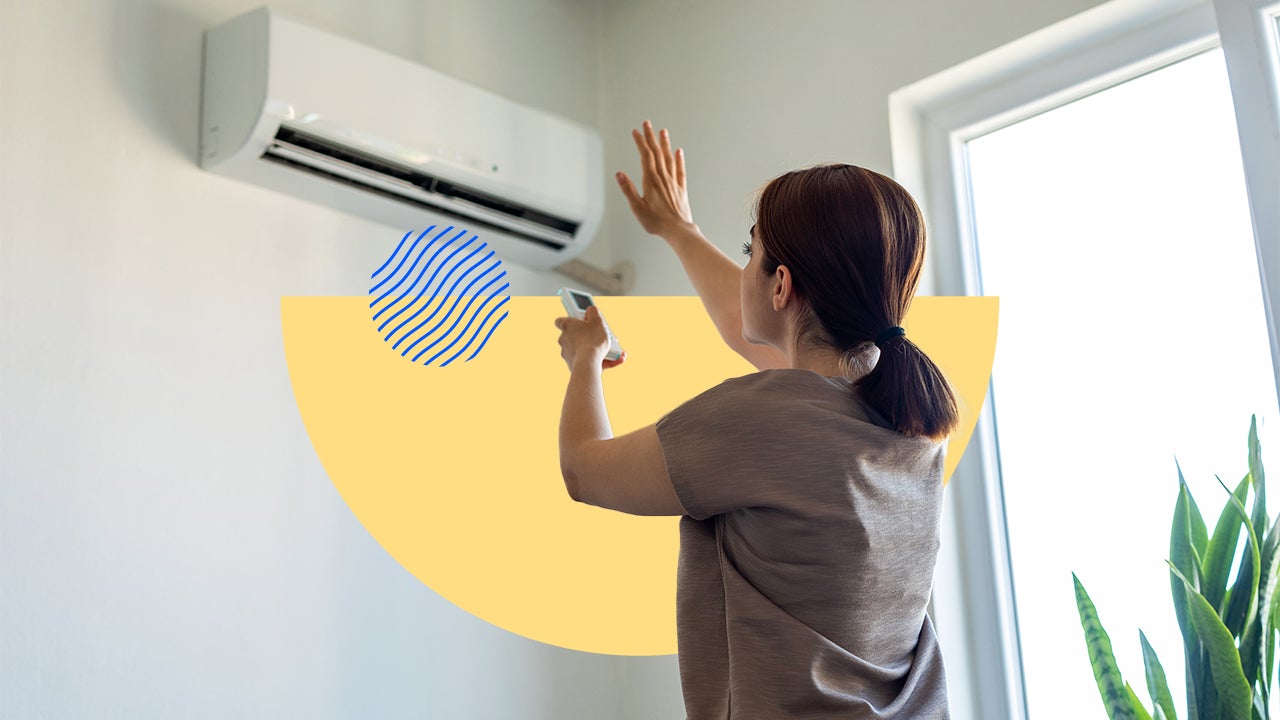The hidden costs of energy inefficiency: Efficient solutions for cost savings benefits

Everyone benefits from energy-efficient living. On the small scale, you lower your gas and electric bills, while on a larger scale, you reduce your environmental footprint and the emissions put out into the world. It’s a win-win all around.
Although inflation has been cooling, living expenses, including energy prices, remain uncomfortably high for many Americans. In fact, month-over-month energy costs rose 1.5 percent in September and 5.6 percent in August, according to the Labor Department’s Consumer Price Index.
In particular, high electricity prices have taken their toll on Americans, as 23 percent who experienced a higher-than-usual electricity bill last summer said it significantly put a strain on their budget, a Bankrate survey found.
Fortunately, there are various ways to combat high energy prices by living more efficiently and building up savings to help cover energy bills during peak months. Here we’ll go over some practical ways you can bring down your utility bills.
Why is my energy bill so high?
Americans’ budgets have been strained due to soaring inflation since early 2021, and this includes elevated energy prices. This means higher monthly bills for everything from electricity and gas to water and internet.
- The states with the highest residential sector energy prices, in cents per kilowatt-hour, include Hawaii (43 cents), Connecticut (34 cents) and Massachusetts (32 cents). (Statista)
- Nearly one-third (32 percent) of people said they’re experiencing higher energy costs. Of those, 35 percent are from the western U.S. and 34 percent are from the Eastern U.S. (Bankrate’s extreme weather survey)
- Based on all U.S. adults, 57 percent of people said that climate, extreme weather, and the environment will have a negative impact on their personal finances in the next 10 years. (Bankrate’s extreme weather survey)
- On average, households spend $329 a month on electricity, natural gas, trash, water and sewer services. This comes out to $3,948 per year. (Move.org)
Average costs of utilities
Americans spend a lot on energy. When you combine electricity, gas and water, the average household spends about $225 per month (or $2,700 in a year), according to Move.org. This doesn’t even include the costs for other utilities such as trash pickup, streaming services, phone and Internet, which add up to another $257 per month, on average (or $3,084 per year), Move.org reports.
When it comes to utility expenditures, there’s a lot of room for improvement, which is especially true in states where energy costs run the highest. The map below shows each state’s 2022 average combined monthly cost of electricity, natural gas, water, sewer, trash, phone, internet and streaming services.
Fortunately, residents of states with the highest utility costs (or any state, for that matter), don’t have to suffer the sky-high charges in silence. There are several steps that can help lower these costs and lighten the monthly load.
How to save on your energy bill
Your energy provider powers most of the systems in your home — your air conditioning and heating units, your electricity, your lighting, and the majority of your appliances and electronics. If you’re like most people, it’s the biggest bill you’ll have each month.
Heating and Cooling
Heating, ventilation and air conditioning (HVAC) costs account for a large portion of your energy bill, especially in the summer and winter seasons, when demand for these services is highest. Fortunately, there are ways to reduce these costs and increase the overall efficiency of your home’s heating and cooling systems. Here’s how:
- Seal up leaks around windows, doors, and air ducts. Air leakage costs Americans anywhere from $200 to $400 in wasted energy spent every year, according to Energy.gov, which estimates you’ll save up to 30 percent per year by reducing drafts. To do this, use caulk or sealant to close up any openings (however small) around doors, windows, and in air ducts to reduce air loss and save cash.
- Install a smart thermostat. Smart thermostats like those from Nest and Ecobee claim to save you anywhere from $100 to $300 on your HVAC costs. In many cases, they might even qualify you for a valuable rebate from your energy provider.
- Upgrade your insulation. Insulation helps you control your home’s temperature — without your HVAC system doing all the work. If your insulation is old or thinning, consider adding another layer to increase its efficacy. Sealing and insulation can save an average of 15 percent on heating and cooling costs, according to the U.S. Environmental Protection Agency. If you don’t have insulation in your basement, attic or crawl space, adding some may provide immediate results.
- Retire old HVAC equipment. If your HVAC systems are more than 15 years old, they probably need replacing. Consider an Energy Star-rated appliance to get the most bang for your buck (and maybe even qualify for a rebate in the process). If your HVAC units aren’t yet that old, bring in a technician annually for a tune-up. The average cost of HVAC maintenance is $75 to $150 — and it can save you thousands in emergency service costs or the price of a new HVAC system, according to environmental news publication EcoWatch.
You should also clean and replace your air filters at least once a month (or as recommended by the system’s manufacturer). Dusting off the intake areas, as well as any baseboard or molding surrounding them, can also help increase their efficiency.
Electricity
Your electricity is another large chunk of your monthly energy charges, totaling around $117.46 on average, according to Move.org. (That’s $1,410 per year.) These costs are even easier to reduce than your heating and cooling costs, though. All you need are some upgraded light bulbs and a few new habits, and your expenses can drop significantly.
Here’s what to do:
- Switch to energy-efficient light bulbs. If you’re still using incandescent bulbs, you’re leaving money on the table. LED bulbs use only a quarter of the energy incandescent ones do, and they last up to 25 times longer, too. CFL bulbs are also more efficient, though they don’t last as long.
- Consider investing in solar panels. Solar panels can save you hundreds in electric costs every year. Depending on where you live, you may even get tax incentives or rebates for installing them.
- Unplug all electronics when not in use. An act as small as unplugging appliances and electronics regularly can result in savings. Energy.gov calls unused electronics “energy vampires” because they continue to draw energy even when not in use. Turning off devices such as coffee makers, laptops and printers when they’re not in use can shave money off your electric bill.
If you have an electric water heater, lowering its temperature can also help. Unless you really need that scalding-hot shower, consider dropping the thermostat down to 120 degrees or below. Taking shorter showers can help, too.
The table below shows how much certain energy-saving strategies and products can reduce your energy bill in a year.
| Cost saver | Average savings per year |
|---|---|
| LED light bulbs | $75 |
| Energy Star refrigerator | $18 |
| Unplugging electronics when not in use | $100 |
| Sealing leaks and insulating | $200 |
How to save on your gas bill
Natural gas costs residents a pretty penny, too, and the average bill for U.S. households was $61.69 per month in 2021, according to Move.org. Though this one is a little harder to cut back on without upgrading to electric appliances and systems, there are ways to reduce your gas use as well as the costs associated with it.
You can:
- Replace furnace air filters often. Just like with your AC system, furnace filters need to be clean and clear in order to function most efficiently. Make it a point to change yours out at least every few months.
- Plan your meals: Cooking more food at a time can help you use your gas stove less throughout the week. You can also use less gas by making meals that don’t require a stove such as sandwiches or store-bought chicken salad or rotisserie chicken.
- Reduce your hot water use. If you have a gas water heater, any reduction in hot water use will lower your costs. This means cutting down on hot loads in the washer, reducing hot water use when cleaning dishes, and taking showers that are shorter or cooler.
While smart thermostats can certainly save you on electric costs, if you’ve got gas heating, they can also save you on gas as well.
How to save on your water bill
Naturally, you’ll reduce your water usage by cutting back on showering, landscaping, cooking, washing clothes and cleaning. Here are a few additional ways to reduce your water costs:
- Take shorter showers. Swapping out baths for 10-minute showers can save you about 5 gallons of water per use. If you take hot baths, it will also save you on heating costs as well.
- Install smart or low-flow shower heads. Swapping out your old shower head for a low-flow one can save you significantly on water use and electricity costs (about $145 per year, according to Energy Star).
- Use appropriate washer settings. Don’t run a “large” load for only a few towels. Make sure you select the appropriate load size and choose the “economy” or “energy-saver” setting whenever possible. These options can cut down on both water and electrical use.
- Fix leaks (even small drips). Energy Star estimates that even a small drip can waste up to 1,661 gallons of water per year, equating to serious utility costs over time. Make sure to get any leaks, however minor, assessed and fixed by a professional as soon as possible.
- Watch your watering times. Watering in the heat of the day will only cause the water to evaporate faster, meaning you’ll need to water more often and for longer to keep your yard healthy. For best results, water just before sunrise, when temperatures are cool (this is particularly important in the summertime).
Keep in mind: The average U.S. household pays about $45.44 monthly in water costs, and Americans use an average of 82 gallons of water a day at home, according to Move.org.
How to save on streaming services and internet bills
Americans spend an average of $108.24 per month on their internet and streaming services costs. Here’s how to reduce your household’s internet and streaming services bills:
- Bundle your services. Bundling your services will often qualify you for a discount, so if you have different providers for your cell phone and internet services, consider combining them into one single package. Many providers (such as AT&T, for example) offer everything from cell service and cable to internet and home security.
- Research streaming services. Look for a company that provides the channels and programs you want, for the best price. Seek available discounts that may apply, such as for seniors, military personnel, healthcare workers or teachers.
- Look for discounts through your employer. If you work for a big organization, chances are it has contracts and negotiated discounts with various service providers. Talk to your HR department about any reduced-cost services for which you might be eligible.
- Try a bill-cutting service. Various services are available that will negotiate your bills on your behalf. You just give them your account info, and they’ll wheel and deal with your cable and internet providers to get you the best deal.
If you still have cable, consider cutting the cord. With so many streaming services and hotspots included in many cell phone plans, many people can get by without a full-blown cable TV package these days. (If it means saving over $160 per month, it certainly may be worth a try.)
Energy (and financial) savings FAQs
— Writer Aly J. Yale contributed to an earlier version of this story.
You may also like

How to save money during inflation: 6 Tips and Strategies

Low-cost ways to make your home more energy-efficient

12 ways to save on air conditioning costs



